HAPPY BIRTHDAY to BADFISH … ONE YEAR OLD TODAY! YAY!!!
Badfish’s first post on 17 January 2015: Serenity

Most everyone aboard the 90-minute Air India flight from the Maldives to India is heading home on vacation. There are perhaps ten other Western travelers onboard. The plane is not large, and surprisingly, little more than half full, a rare and enjoyable event when traveling these days. There is one toddler aboard; he riddles the plane with squeals and tramples the toes of one man’s patience.
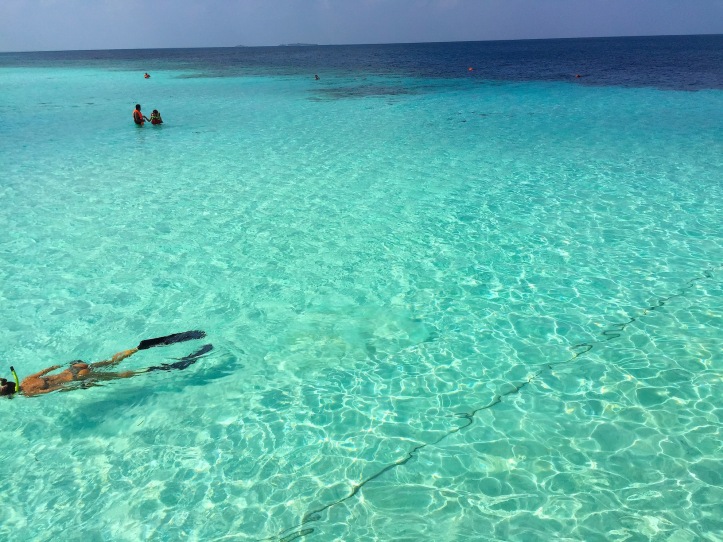

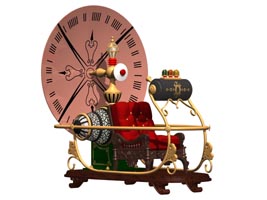
Flying from the Maldives to India is like boarding a time machine: it’s something like 500 miles, but more like 100 years from Male Island to Kovalam Beach in Southern India.

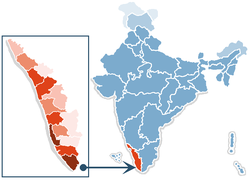

If you peruse airport bookstores these days, you’ll most likely find numerous books about Westerners seeking spiritual enlightenment in India, perhaps most notably Elizabeth Gilbert’s memoir Eat Pray Love. We might surmise this is a fairly new phenomenon. However, Somerset Maugham traveled to India by steam ship in 1938, and visited various spiritual sites and spiritual masters, including the highly-venerated Sri Ramana Maharshi at his ashram in southern India. I read that when he met Sri Ramana, Maugham encountered a spiritual experience, and fainted. His book, The Razor’s Edge, is perhaps a [semi] fictional account of his adventure in India, and was a popular and successful book when first published, and you can still buy new editions on Amazon.
Over the years, I have traveled to India numerous times. During these visits, I have stayed in various ashrams, meditated, practiced yoga, always with the intention of moving toward spiritual growth. But perhaps there is such a thing as “a bridge too far.” When I’m in India and around spiritual energy, I feel like my kundalini rises, and it might actually be possible to levitate in meditation. But then I leave India and travel home or to some place like Amsterdam, and my energy and kundalini begin to puddle around my ankles. And stays there—the proverbial one step forward, two steps back.
The notions of spirituality and paradise may have something in common. The concept of paradise is relative, and seems to change from one land to another, perhaps from one person to another. To some in today’s world, paradise may simply mean persevering. The young man sitting next to me on the Air India flight harbors the unvarnished light of realism in his eyes. Eyes like this are burdened with the weight of unfulfilled dreams that may never materialize. He works at a luxury resort on a desert island in the Maldives, yet simply cannot wait to return to his humble home in Kerala.
He tells me his name is Sanjay. He wears a T-shirt that asserts: “It’s NOT Me, It’s You.” He works as a bar tender on a small island in the South Male Atoll. When I comment on his T-shirt, he tells me that one day a customer was wearing this very T-shirt, and Sanjay liked it so much, he asked if he could buy it from him—a double- shot-of-tequila kind of guy. The customer said no, but before he left the bar, he pulled off the T-shirt, and left it in the leather receipt wallet along with his tip. Sanjay tells me it’s his favorite shirt. He has five brothers and sisters, he’s the oldest and sends money home every month to help pay for their schooling. His whole family, including grand parents, will be greeting him when we land at Trivandrum International. Sanjay is a fairly thin man, even for an Indian. The T-shirt hangs loose on his small frame.
Sanjay is one of the few people I’ve met while traveling who knows where Abu Dhabi is. At first, this surprises me, but then I realize it makes sense because most Indians I meet in Abu Dhabi come from Kerala. Sanjay used to work at a large 5-star hotel in Dubai. He believes life is better in Dubai, there are more things to do and see there, but the money is better in the Maldives. This, too, is understandable because my chin dropped like a heavy boulder when I read on the menu at the resort where I stayed that a hamburger would set you back—are you ready?— $42 dollars. Forty-freakin-two. Dollars. And if you want to rent a Jet Ski, no problem: $50 for ten minutes. Paradise might sometimes mean you’ll be fasting a few days. Or turning vegan and munching kale. Or hijacking a Jet Ski to perpetrate some illegal spear fishing.

One of the greatest delights while traveling outside of the United States these days is filling your stainless steel water bottle full of drinking water or fresh-squeezed mango juice and carrying it aboard the aircraft after sending it through the airport X-ray machine in your carry-on bag. Places like India, the Maldives, Bali are simply not as concerned about radical miscreants. No travelers take their belts off, nor their shoes, at X-ray machines in places like this. It’s the way traveling was maybe 15 years ago. However, if security spots a 10-inch Bowie knife in your carry-on, you’ll probably raise some eyebrows and lose it: they know the difference between unnecessary fear and stupidity.
One of the worst experiences while traveling outside the US these days is forgetting that you left your favorite folding knife in your carry-on, a knife you’ve carried daily and traveled with for twenty years—purchased from a wily, hard-bargaining old lady wearing a pigtail and silk robe in a stall along Hong Kong’s Cat Street Market, a small, thin, lightweight, elegantly unpretentious knife with a minimalist flat, stainless steel handle that you used for everything from cutting twine to spreading peanut butter. Sometimes, it’s the little things that matter most.
Air India makes a rather clumsy, discordant landing at Trivandrum International Airport. The locals haul their thin bags through the relatively small terminal—there are only three baggage carousels. Somehow, I am one of the first to reach Baggage Claim from Immigration, and my bag is one of the first onto the carousel. When this kind of good fortune happens, I have two thoughts: first, “very cool,” and second, “uh-oh.” You never know what the cosmos might have up its sleeve for you when things like this happen. Usually, I go with, and relish, the “very cool” but keep an eye open for the possible “uh-oh” to appear somewhere in the day.
There are no X-ray machines operating at the exits of the air terminal. I almost buy a sim card for my phone before leaving the terminal. When traveling, I follow a number of self-imposed “travel rules” gleaned from considerable experience: Rule #3, if you see a photo, take it; Rule #6, if you see something you need, buy it when you see it—do not wait, ever. But for some unknowable reason, I decide to break my own rule and wait till I get to the hotel to buy the sim card. Perhaps I’m anxious to get to a beach I believe I do not want to see (FYI—I have made no travel rule about voicing sarcasm toward myself).
I walk outside expecting to find the driver from my hotel carrying a sign with my name. There is no driver—“uh-oh.” I feel slightly guilty that I’ve come to enjoy being picked up by hotel limos (they call them limos, but it’s a Toyota, some with no a/c). This was not my method of travel for most of my years of travel. Usually, I would walk to town from a ferry or train station or bus terminal—in the heat of day and humidity near the equator. Even if I could afford a rickshaw or taxi, I walked carrying my bags, and loved it. These days, I lean more toward comfort and ease and less toward experiencing the wonders of travail during travel. I’m a little miffed my driver is not here; I probably look like one of those fuming first-class air passengers at check in who is forced to wait one minute to get checked in. I begin to sense that I have changed in ways I never would have guessed I might.
I actually harbor a bit of fear about landing at some airport and your hotel driver not being there. I carry that fear because that is exactly what happened the time Lisa and I flew in to Lima, Peru, and arrived very late at night. Lisa had come down with some kind of illness, perhaps food poisoning or flu, during the flight (another reason I carry my own food on flights and don’t eat airline food, ever: Rule #9). As Lisa and I stood there in the center of the Lima arrival hall under bright lights, we felt like animals in a zoo on display cordoned off by heavy rope in front of hundreds of drivers and other people waiting for passengers on planes arriving along with ours. I walked again and again up and down the long row of drivers with signs, but no one showed up with my name on their sign.
The whole idea of booking the hotel driver was so we wouldn’t worry about how to get to our hotel that late at night. You can’t always trust a regular taxi driver to know where a 3-star hotel might be located in a third world. Many taxis don’t have a/c, let alone Sat Nav. Lisa was throwing up in a bag in front of all those people, I was frantically searching for my name on a sign. This was not our finest hour as travel buddies. The hotel limo never showed, and worse, when we ended up taking a regular taxi and finally arrived at the hotel, they had given our room away (it was after midnight) and didn’t have another one available.
So yeah, I’m a little miffed my driver is AWOL. The policeman on duty points to the row of three taxis waiting in line, but I decide to wait a few minutes to see if the driver shows. The terminal clock seems to have stopped. There is no crowd of people outside Trivandrum International; it’s a rather odd, solitary feeling. While waiting there, one of the Western travelers who was onboard my flight meanders past, an older man. Well, he’s younger than me, but not a young man. He seems frayed around the edges. He lifts his large backpack from the trolly to his back, and slings a smaller daypack to the front of his body—the now-traditional and efficacious backpacker arrangement of bags. He slips a well-worn boonie hat on his head and begins walking into town.
I’m wondering if I will ever travel like that again. Part of me admires the idea; part of me simply does not want to deal with it again. I wonder if I am I getting old, or jaded, or lazy, or smart? One thing I realize is that this journey I am now on will most likely be the last trip I make where I will not be thinking about the expense of the trip. Once I retire and no longer have a pay check rolling in, I will not be so free with spending money on sojourns. And I will have to return to a more frugal mindset when traveling, which was my mindset for most of my years traveling. I can do frugal; I had plenty of practice.
In his book Outliers, Malcolm Gladwell states that doing something for 10,000 hours is the “magic number” for becoming truly great at it: great as in Michael Jordan great, or Bill Gates great, or Beatles great. I’ve surpassed 10,000 hours of frugal travel. I’m the Michael Jordan of traveling frugally. I’ve spent months at a time in $4 hotel rooms. But now, I’m just not sure I really want to get back to that mindset. Having sufficient money makes traveling so much more…doable. Think about it: would you rather walk into town wearing two backpacks and a boonie hat in tropical heat or sip mint juleps at the airport bar and be miffed that your limo is late?
Just as I turn to walk back inside the terminal to purchase a local sim card, so I can maybe phone the hotel, the policeman calls out to me as my driver appears seemingly out of nowhere: smiling, waving a sign with my name on it, apologetic. I can’t describe the feeling of seeing your name on a plaque held by a driver.
The road from Trivandrum to Kovalam, a relatively new beach resort where my hotel sits, is fairly-well maintained for India. But the traffic is hectic: two lanes of huge trucks, buses, pint-sized Tata cars made in India (that look more like shoe boxes than cars), motorcycles, and motorized rickshaws all weaving together in a moving mosaic of engines and rubber and steel and rusting chrome. As we near Kovalam, ancient tree limbs arch over both lanes of the road. We pass a whole hillside of coconut trees partying with wild banana plants. Then the road begins to deteriorate, until it turns into pot holes and deep cracks. Then into dirt. Bright billboards advertise toothpaste and deodorant. Political posters plaster wood fences. Coca Cola is everywhere. Traffic stops while a thin man wearing a white lungi herds a cow to the side of the road. Two women in bright multi-colored saris and slick black hair peer into the window of a bakery.
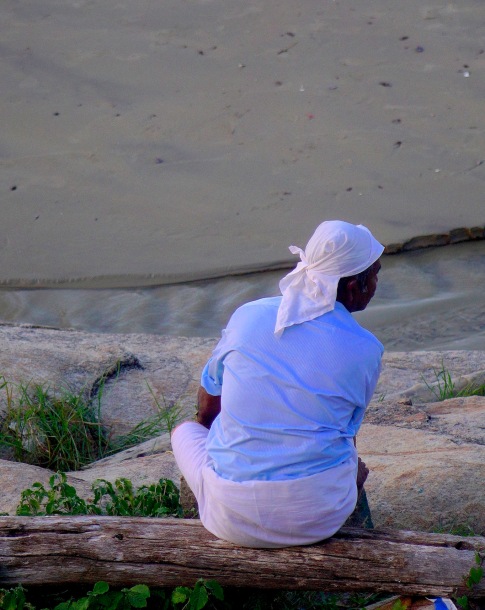
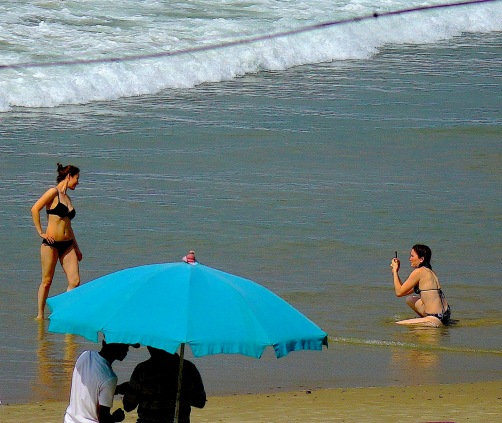
Kovalam in a previous lifetime was a calm fishing village huddled around its crescent beaches. But my guidebook says these days, Kovalam is “Kerala’s most developed resort.” Keep in mind that everything is relative. Kovalam is not the Maldives by any measure of relativity. Nearly 26,000 locals live here. Indian city dwellers from Trivandrum visit on weekends or to vacation, as it lies a convenient 9 miles away from the city. You will be hard-pressed to find a trash can in Kovalam; you might feel guilty if you toss a tissue to the sand along a narrow alley, but sadly, you might find yourself doing just that…when in Rome.
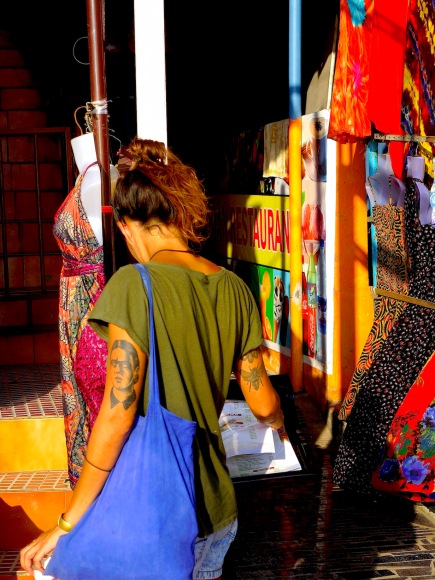

Geography is married to history in this part of the world. Most Keralites derive their ancestry from Dravidian and Aryan cultures that long ago settled in Kerala and intermixed with each other. Variant other ancestries derived from centuries of trading and contact with non-Indian cultures when people such as the Portuguese, Arabs, Jews and other ethnicities settled in Kerala, mostly to trade. According to Sumerian records (2000 BC), Kerala was a major exporter of spices, especially black pepper, which a couple thousand years later, the Romans paid way too much gold for. During these ancient times, Kerala also traded with Babylonians, Assyrians, and Phoenicians. At one point, Kerala pepper was used as currency. I have to admit, the pepper in Kerala tastes quite different than elsewhere. It’s like pepper on steroids. You don’t need to pour as much as you normally would on your omelet. The flavor is richer, smoother, more…well… peppery.

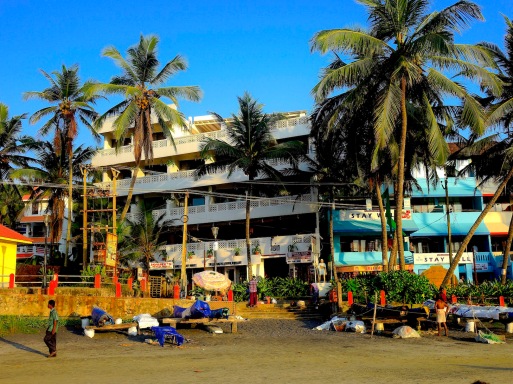
My hotel room balcony overlooks the beach. I’m amazed at the number of people running or speed walking on the sand at 7:30 in the morning. The waves are small, but powerful, and there are boulders below the cliff near the lighthouse, so it can get dangerous surfing or swimming. Every year, a number of people die in the waters off Kovalam. But for some reason, I’m strongly drawn to the ocean here; I’ve decided I’m going to body surf those waves, maybe three feet high this morning. I’m not going to speed walk anywhere, though. I’m still coughing and hacking from the Maldives flu, but I’m feeling more like a person now, more like moving around. And oddly, I am beginning to miss my worthless Maldives Jacuzzi. It is strange just what a man can get used to while traveling—worthless Jacuzzis, Toyota limos, eating curry rice with your fingers, vegemite. OK, maybe not vegemite.


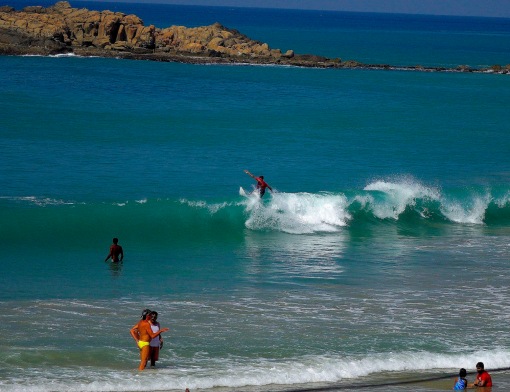
Some people say that when your snot turns yellow or green, it’s a sign of infection and due to bacteria. But no. When you have a cold or infection, your body sends white blood cells to the area. White blood cells, which originate in bone marrow, are part of our body’s immune system and fight bacteria. And these white cells contain a greenish-colored enzyme, I forget its name. If you collect enough of those cells in your snot maker, your snot can become colored. Apparently, I am very good at this. I have multi-colored snot. I’m a natural-born self healer, obviously with my 10,000 hours of snot manufacturing completed. I’m the Michael Jordan of snot making. I think this kind of thing runs in my family; I have a half sister who may be better at it than me.
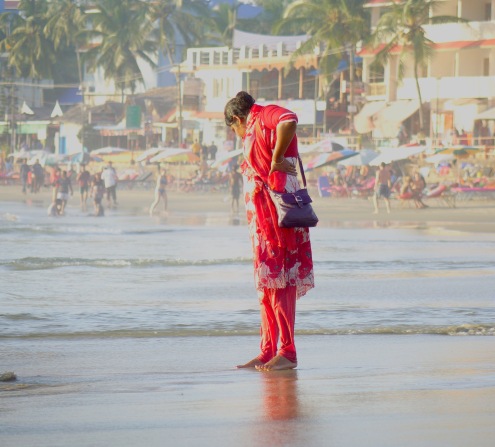
I ease slowly into the ocean at Kovalam’s Lighthouse Beach, the water is clear (but no, not Maldives clear) and fairly warm but still refreshing. I dive under the first wave that rolls in, whitewater surrounds and massages the length of my body. This is exactly what a Jacuzzi should do. I come out the back side of the wave, and for the first time in over a week, I feel almost human. No pressure on my brain, no pressure on my face and sinuses. No pressure on the roots of my teeth. No healthy green snot. At this moment, the ocean feels like I’ve crawled back into the womb.
I used to surf when I was young. I was never a hot-shot surfer, but I could catch a wave, stand up on the board, walk to the nose and hang five or a quasimodo. Those were the days when boards were 9 or 10 feet long. And no leash tied to your ankle. When you fell off your board, you were usually in for a long swim because if the wave caught your board, which it usually did, it could easily push it all the way to shore, which it usually did. I got really good at swimming; I’m pretty sure I’ve done my 10,000 hours of swimming, also.
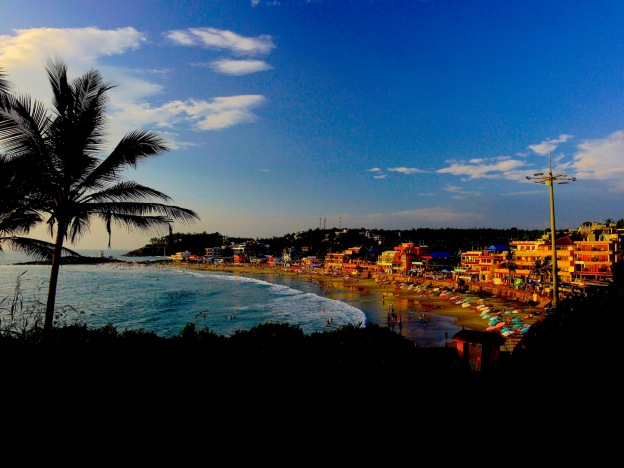
As I catch my first wave body surfing at Kovalam Beach, I understand immediately how someone might get lost at sea here. These waves are maybe three or four feet high, not large waves. But they are powerful. I have to actually concentrate on keeping my back strong and straight, so the wave doesn’t bend me in two. These are easily some of the most powerful small waves I’ve encountered. I’m actually a little afraid I might get hurt in these waves; I never had thoughts like that when I was young; in those days, if there were any-size wave, you’d find me out in it with no fear. I once paddled out into 25-foot waves at La Jolla’s Windansea Beach and gave no thought to fear—uh…until I found myself freefalling down the face of one of those monsters. I guess it just may be like Betty Davis says: “Getting old is not for sissies.” But I can’t stop myself from going back out to catch more waves, again and again. Evidently, you can take the surfer out of the waves, but you can’t take the waves out of … wait, is that going to make any sense?
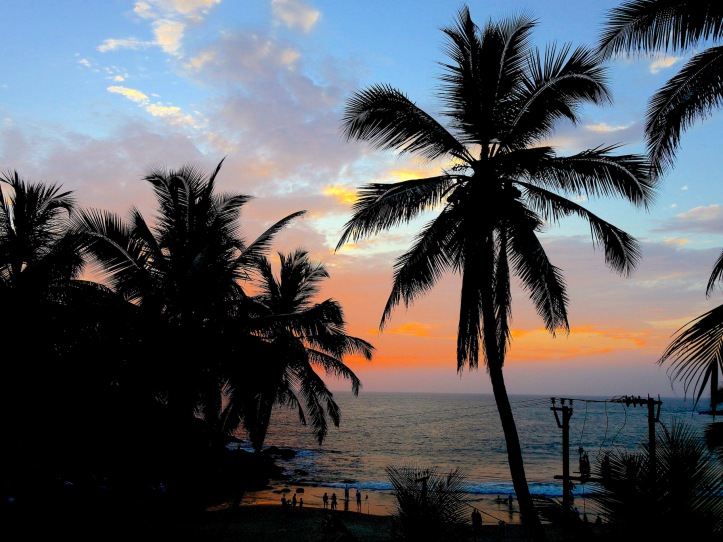
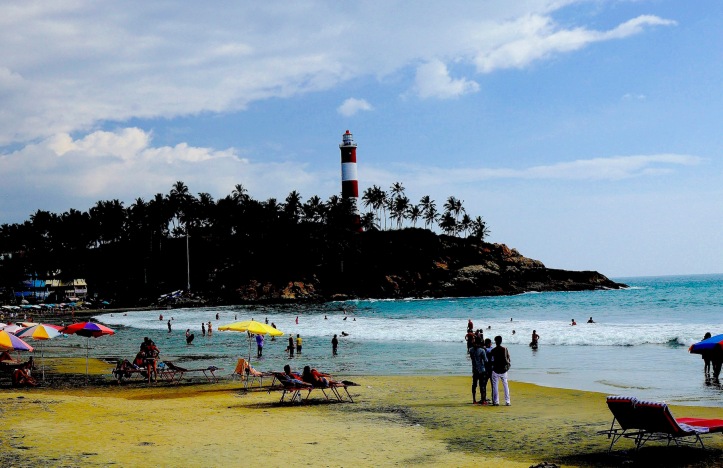
In the late afternoon, I stroll along the black sand at the south end of Kovalam’s crescent-shaped Lighthouse Beach. The cliff arches its rocky spine toward the sunset, holds the Vizhinjam Lighthouse aloft, and braces its rugged foot against each wave that washes ashore. I scramble over boulders, then begin to climb the stairs leading up to the lighthouse. I want to climb to the top of the lighthouse, see the view from that high. But I arrive too late, the keepers are just locking the door. One keeper gives me a thumbs up and says, “Tomorrow, ten, open.” Wild jackfruit hangs from a thick tree. Children run down the stairs, climb over the rocks and tumble into the sand, then race to the water. Two young men smoke clove cigarettes and take selfies with the lighthouse in their backgrounds. A woman in a purple and blue sari carries a baby and saunters along the dirt path. A brisk breeze lifts sea eagles into holding patterns high above the coconut palms and hibiscus. Jungle geranium blossoms lacquer the air.
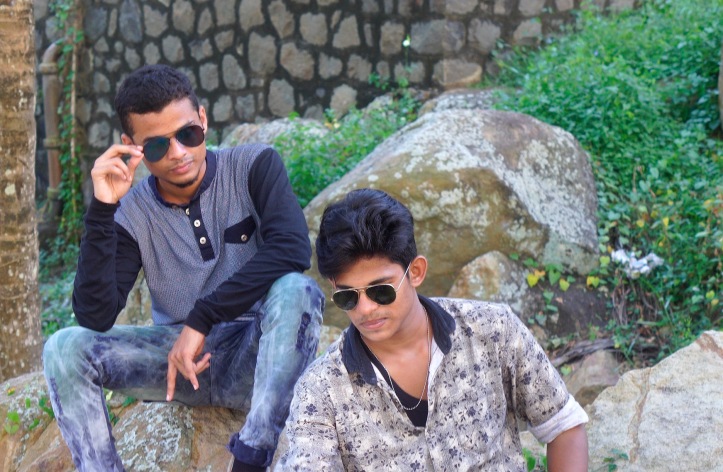


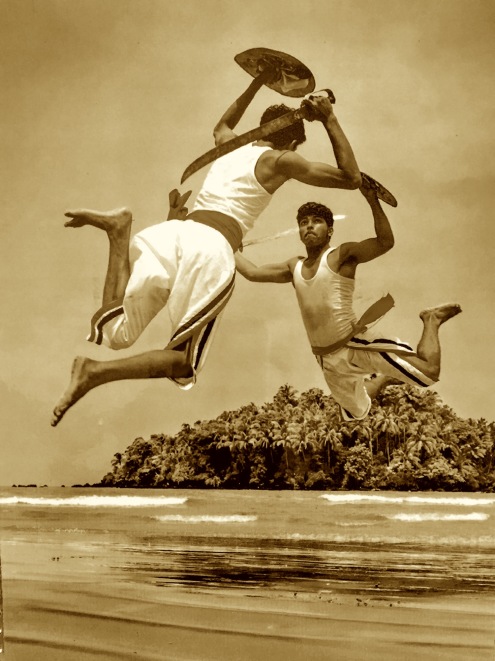
I sit at the top of the cliff a long while. I peruse the ocean and consider where to travel next. Kerala is known as one of the most intensely spiritual areas in the world: Hindus, Muslims, Christians and even a small number of Indian Jews thrive in harmony here. I consider following in Somerset Maugham’s footsteps to get a hit of spirituality by visiting the Sri Ramana Ashram in the sleepy, yet touristy, spiritual town of Tiruvannamalai, nearby in Tamil Nadu. Or maybe I’ll just travel straight up the west coast of Kerala and visit Amritapuri, the ashram of Amritanandamayi where a few thousand devotees live, see what that scene is all about. Ramana Maharshi left his body in 1950, so won’t be at the ashram where Maugham met him and fainted.
Amritanandamayi spends much of her time away from her ashram, traveling India and other countries. However, I’ve been told that she just happens to be in her ashram at this moment in Amritapuri. That facilitates my decision making: a live guru and a warm hug seems somehow better than no hug from a guru who has left his body. We might want to call it karma, or serendipity; I like life when decisions are made easy for me (especially if there is also no “uh-oh” showing up later). I decide to continue north, get a hug, move toward enlightenment in “Gods Own Country,” the slogan you see advertised all over Kerala: one, because it’s such beautiful country, and two, because there is so much spirituality happening here.
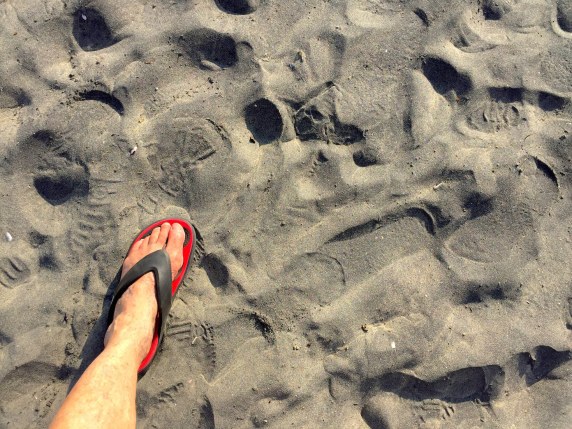

At this moment, I sit below soaring sea eagles and feel content. I have a travel plan. I’m nearing a spiritual path—I’m traveling through God’s own country. I’ll receive a hug and hopefully a little grace. The travel angels seem to be dropping rose petals on the path approaching tomorrow. The aroma of the ocean begins to climb the cliff. The sun dips into the Lakshadweep Sea, the sky blooms into five shades of red. I begin to wonder just what it is about the ocean that draws me to it even when I believe I no longer desire a beach. I believe I may be in touch with my inner fish.
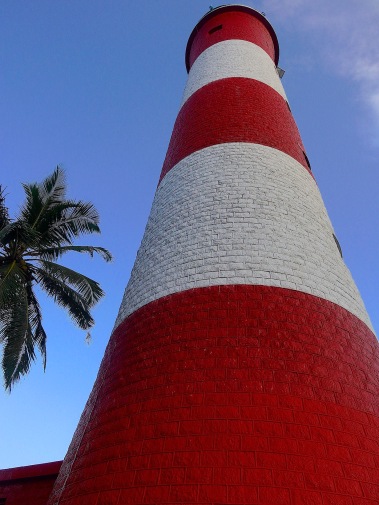
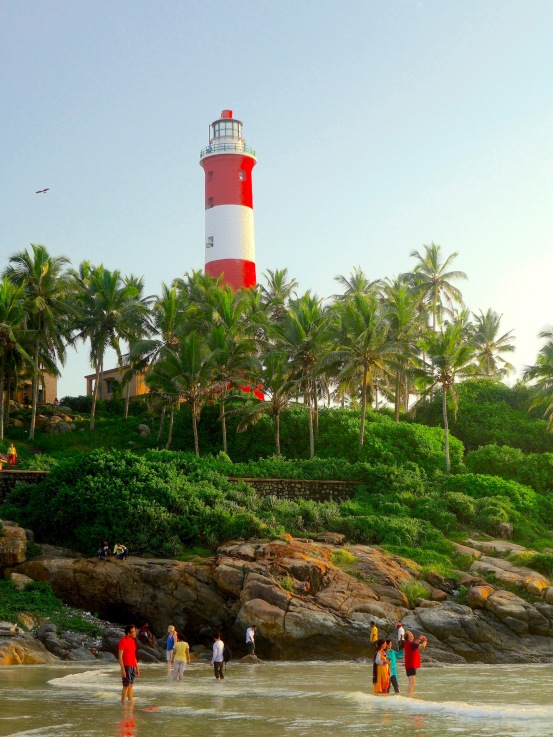
NEXT POST: we travel north along Kerala’s coast to the backpacker haven of Varkala, where a good cappuccino costs more than breakfast.
If you were to guess—would you think I take a bus, a train, or a faux limo to Varkala?
Have you had an interesting experience with a taxi or other transport during your travels?
In my next post, would you prefer I stick with “snot” or revert back to “poop” because honestly, I can do either in India?
You can find more entries in DP Photo Challenges here: Weight(less)
and here: Alphabet
You can find more entries in Lucile’s Photo Rehab here: Photo Rehab

Oh Congratulations!!! That’s really a vivid post on Kerala 🙂
LikeLike
Cool. Thanks for hanging out here!
LikeLiked by 1 person
Happy to be here 🙂
LikeLiked by 1 person
loved your piece on Kashmir
LikeLiked by 1 person
Thanks so much, so glad you liked it!!
LikeLike
Congrats on the Anniversary! Happy blogging and travelling dear Badfish.
LikeLike
Thanks so much…I feel older!
LikeLiked by 1 person
You are most welcome!! 😀 😀
LikeLike
!!
LikeLiked by 1 person
I don’t have time to read this in one sitting but Badfish, I’ve missed you!! I so love your style and honest writing. You fill my imagination with pictures of your wanderings. I will comment more when I’m done, but I just had to let you know. Sooooo glad you’re back. I’m at the potholes. Happy Valentines!!
LikeLike
Cool…read as you can! I got one Valentine wish..thanks!
LikeLike